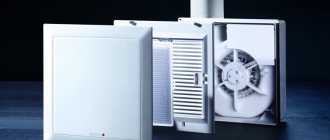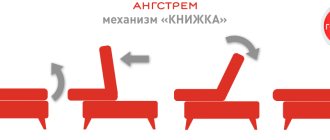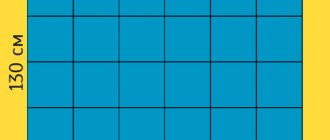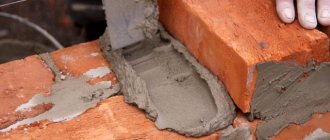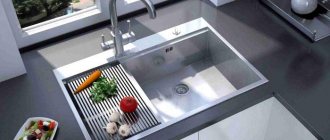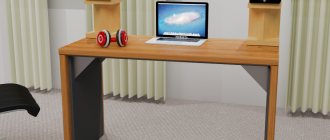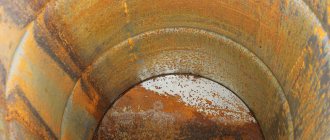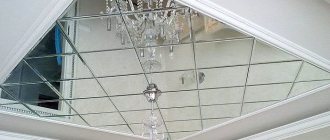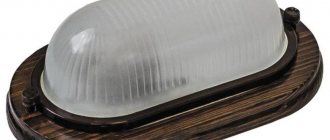- How to choose?
- Hanging hoods
- Dome hoods
- Built-in hoods
- On what principle do hoods work?
- Hood performance
- Noise level and dimensions
- Control Panel
Today, a kitchen hood is an integral attribute of any kitchen. But in our modern age, store shelves are literally “inundated” with various models of these devices. What types of kitchen hoods are there and how to choose the best option for yourself is one of the main questions that any person asks himself when faced with the need to purchase this appliance.
How does the hood work?
- At the bottom of the housing there is a strong filter that retains dirt and soot.
- Inside the device there are fans that are driven by a motor.
- Next, an air duct leading to the street or into the ventilation shaft of the house is attached to the upper part.
- Various models of hoods provide additional devices for better cleaning, for example, grease traps.
Which filters for hoods are better?
- Grease filters are designed to capture suspended fat particles from the air. They are divided into reusable and disposable. The latter cannot be washed and must be disposed of after use.
Reusable metal ones require only regular cleaning and will last as long as the unit itself.
- Carbon filters are used in products where air exchange is provided: air is first drawn into the device, and after cleaning it is sent back into the room. The composition is based on activated carbon, which absorbs odors well.
What power does the hood need?
The performance of the device is calculated using the following formula: the width of the kitchen is multiplied by the length and the height of the ceiling, then by another ten. The last figure is the rate of air exchange per hour.
The higher the power of the product, the faster the atmosphere in the kitchen will be refreshed, the more comfortable it will be for you to cook. The minimum productivity of industrial products is 300 cubic meters per hour.
Where is the hood connected?
It is important to correctly connect the device to the ventilation shaft and to the electrical network. The unit itself should be located at a height of 70-90 centimeters from the hob.
To avoid melting of the device, you cannot mount it below the established limits; when installed above 90 centimeters from the stove, the effectiveness of the product is significantly reduced.
The exhaust hole and the installation location of the device are connected by corrugation in the case when this pipe can be hidden in the kitchen unit. When the exhaust duct is located on the outside, it is better to use special duct pipes with a rectangular cross-section.
Where does the hood vent in the kitchen?
The device can be brought out into the ventilation shaft hole, which is available in every house. If this is not possible, then an additional hole is made in the wall with output directly to the street.
Design of exhaust hoods
Mainly, all hoods differ in their shape and design. The appearance of the device, as well as many aspects of its functionality, directly depend on this. In this section we will provide a brief description of the most popular models of exhaust systems.
Hanging hoods
A suspended hood is the most compact type of ventilation systems for the kitchen. The process of its operation is to filter the air in the room, so it does not have access to the general ventilation of the building. Thus, the main part of the suspended type is a system of filters that cleans the air from smoke, moisture and unpleasant odors.
Budget models have the simplest types of filters - acrylic. They are highly susceptible to contamination that may appear during the cooking process - the settling of fat and dust particles. At the same time, acrylic is quite difficult to clean from various stains. According to this indicator, it is recommended to change such filters at least once every few months.
More advanced filters use metal grids - dirt also settles on them, but they can be cleaned using ordinary detergents. With proper care, such dampers will not need to be changed while using the hood.
- The main positive characteristic of suspended exhaust stations is the small size of the device - it can even be installed under kitchen cabinets above the stove.
- Disadvantages of such a filtration system: difficulty of maintenance and low power of the device - suitable only for small kitchens in an apartment.
Dome hoods
Classic kitchen hoods are dome or fireplace hoods. They have a trapezoid shape and have long been used for ventilation of stoves, barbecues and other hot surfaces where hot air must be removed.
Dome systems operate on a flow principle; they connect to the home’s ventilation system and draw smoke and steam into it. Some similar devices also support a recirculating air purification function.
Dome-type models can have any power rating and operate in rooms with large volumes of air.
Dome hoods are quite large - they require separate space to be located between the kitchen cabinets. The device will attract attention, so it is especially important to pay attention to the design of the model. In stores you can choose a dome structure that will fit into the interior of any style - be it classic or modern.
- The advantages of the dome shape: high power levels and expanded functionality, a large selection of decor.
- Negative qualities of dome ventilation: large sizes.
Built-in ventilation systems
T-shaped hood models are designed to be placed inside furniture or decorative panels. These exhaust hoods are connected to the ventilation by a chimney, but they differ from classic fireplace models in the absence of a dome part.
A fully built-in hood is selected based on the size of the stove and the furniture in which the ventilation will be placed. Many kitchen furniture manufacturers offer special cabinets without bottoms for T-shaped hoods. However, an ordinary cupboard can also be converted into a hood.
T-shaped hoods can remain visible - in this case, it is necessary to combine the model with the interior of the room. Devices of this shape will look especially advantageous in modern design in high-tech, modern and minimalist styles.
- The advantages of built-in hoods: the ability to hide the device in furniture, functionality.
- Disadvantages of the T-shape: not suitable for all furniture sets.
Vertical and inclined structures
Another type of T-shaped hood is an inclined hood. It differs in that the retracting part is placed at an angle relative to the wall. This model also includes vertical hoods.
The inclined design is very popular in modern-style interiors - these unusual hoods have an interesting and bright design. At the same time, it is not inferior to other models in terms of technical capabilities. Combustion products are perfectly drawn out of the air thanks to a system of fans and filters.
- Advantages of inclined structures: space saving, good technical performance.
- Disadvantages of a sloped design: complex design: not suitable for all interiors.
Corner exhaust systems
When saving space in the kitchen, the stove is often placed in the corner of the room - this allows you to free up space for furniture and create comfortable work areas in close proximity to the hob. Thanks to this trend, a new type of corner hood for the kitchen has appeared.
In most cases, such an exhaust system follows the shape of a dome, but its back part forms a triangle, which allows you to place the device above the stove in the corner of the room. The back wall thus protects the tiles or wallpaper above the stove from grease and dampness and promotes better traction inside the pipe. The corner design can also be T-shaped or inclined.
- Pros of corner hoods: ideal for placement above the stove in the corner of the room.
- Negative characteristics: depend on the shape of the selected device.
How to choose a kitchen hood
Please pay attention to the following criteria when choosing:
- Aesthetic indicators. How new equipment will fit into your interior.
- Dimensions of the device. Take measurements before purchasing.
- Product form.
- Power. Choose performance depending on the area of the space.
- The principle of operation of the unit.
Important parameters
Before purchasing, pay attention to the following parameters:
- Equipment. Grease filters in the kit must be provided by the manufacturer.
- Performance. You must understand how much power you need from this unit in order for it to work efficiently.
- Silence. Not all models are quiet. 40 decibels is the optimal parameter, the sound will be quiet.
- Options. Do not buy a product without first measuring the space where you plan to install it.
Minor parameters
- The color of the product does not matter if it is masked by a kitchen panel.
- Manufacturer. If you are satisfied with all the important parameters, then you shouldn’t overpay for the brand.
- Exhaust connection type. Choose corrugated or square pipes; you can even make a move from drywall.
- Additional lighting. Manufacturers offer devices with built-in light bulbs to illuminate the hob, but usually they provide little light.
- Remote Control. Ability to adjust power remotely.
- Sleep timer.
- Switch panel type.
Hood performance
A very important indicator when choosing a device. Performance affects the efficient operation of the hood. It depends on the area of the kitchen. You can also calculate the required value yourself. The indoor air exchange coefficient accepted by SES is 10. Therefore, multiplying the kitchen volume by 10, you will get the required productivity.
But experts recommend multiplying the result by 1.3, this will allow you to choose a device with a power reserve that will certainly work very efficiently in your kitchen.
It is also necessary to buy a hood with a power reserve in order to extend its service life as much as possible. Any device that constantly operates in the maximum possible mode fails much earlier than a similar device operating in a more relaxed mode.
The best hood without duct
Recirculation-type products differ from flow-through ones in that they do not have an outlet pipe to discharge contaminated air into the ventilation shaft.
In this type of device, the air is purified internally by a two-level filtration system and then released back.
Characteristics
- No air duct.
- Compact design.
- Several operating modes with the possibility of adjustment.
pros
- Unlike a flow-through system, a stationary one will continue to operate regardless of surrounding influences.
- Lightness of design. No additional pipes or fasteners required. It looks elegant and does not clutter up the space.
- Easy to install. Several fastenings and connection to the network without additional laying of air ducts.
- Grease filters are easy to clean and replace. They can be washed in the dishwasher.
- Low cost compared to flow-through models.
Minuses
- You often have to change carbon filters. You cannot wash them; you need to throw away the used material and buy new one.
- Small selection of models.
- These units are more suitable for kitchens with a large area, as they take up a lot of space.
Rating of the best models
- The most reliable option in its category is Bosch DHU646 U.
- Cata Ceres 600 Negra is functional, has three speeds and touch controls.
- Pyramida MN20-60 is an excellent option for small kitchens up to 9 square meters.
How to determine the required size of a kitchen hood
Let's figure out how to choose a hood for the kitchen above the stove 50 cm or more. The dimensions of the hood must correspond to the dimensions of the hob. On average, the width of the slab is 45-90 cm. Therefore, hoods are made with such dimensions that they fit within this range. On sale you can find models with dimensions of 50, 60, 90 and 120 cm.
Note! The dimensions of the built-in hood must be equal to or larger than the dimensions of the hob. Otherwise, the hood will not cope with its responsibilities. Some of the unpleasant odors will begin to penetrate into other rooms from the kitchen. If the hood is slightly larger than the stove, then it will be able to completely absorb the resulting soot and odors.
In addition to the width, also consider the mounting height of the hood. According to all the rules, the product must be placed at a distance of 75 cm from the gas stove. If you have an electric stove, this distance should be slightly less - 65 cm. Only in this way can the hood duct remove all contaminated air, providing an optimal level of cleaning. In addition, this will eliminate the possibility of ignition of fat that accumulates on the surfaces of the hood.
The best fully built-in hood
The product is completely built into the kitchen set.
Characteristics
- Additional sliding panel.
- The body length varies from 45 to 90 centimeters.
- Possibility of flow-through air exhaust or recirculation.
- Mechanical and electrical models.
- High performance.
pros
- Space saving.
- The retractable panel increases the air suction area.
- Compact and ergonomic design.
- Easy to install.
- Aesthetic beauty.
Minuses
- The duct space in cabinets is not suitable for storing other things, since the duct takes up a lot of space in the unit.
Rating of the best models
- Electrolux egf 50250S is easy to use and is the best in its category.
- Zanussi ZHP 615 X is easy to use, adjustable with a mechanical slider.
- Elica eliblok 9 LX is equipped with two engines of maximum performance.
Hood control systems
For hoods, there are three options for lighting control units and motor power. They differ in cost and therefore it is necessary to take this into account when selling.
The simplest block has a slide switch consisting of two sliders.
One of them controls the lighting and has two positions (on/off). The second controls engine power and has three positions corresponding to three engine speeds. Each speed corresponds to the extraction power. The second control unit is a row of buttons on the front panel of the hood. Similar to a slider, one of the buttons turns on the lighting, the rest control the motor. The speeds are switched on sequentially.
The latest development is the pseudo-touch control unit. It consists of 4 buttons that include engine operating modes and lights. Speeds are switched in random order. In addition, this unit has a built-in electronic timer. It is programmed for 15 minutes, that is, after turning it on, the hood runs for 15 minutes and the motor and lighting automatically turn off.
The best inclined hood
The inclined model has an impressive design; the glossy surface fits best with modern headsets.
Characteristics
- Touch or button control.
- There is an automatic shutdown timer.
- Additional lighting included.
- Glass front panel.
pros
- Large air suction area.
- Wide functionality.
- There is more space above the working area when cooking, thanks to the inclined plane.
Minuses
- High price
- Requires regular wet cleaning, as the glossy surface gets dirty quickly.
Rating of the best models
- Eleyus Lana 700 60 Bkl. Air exhaust and recirculation, three speeds, low noise.
- Krona Irida 600 is electronically controlled and equipped with air exhaust and circulation functions.
- Faber Cocktail XS BK A 55 is equipped with touch controls and meets all the stated characteristics. Low noise and maximum efficiency are the main advantages of this model.
Hood design: popular varieties in combination with the interior
Modern kitchen hoods offer a lot of scope for design solutions. Previously, the main design option was a fireplace hood - it was painted in different colors and complemented with decorative trims and push-button panels. Nowadays, ventilation design tends towards minimalism - the main decoration is the surface material itself - metal, plastic and glass, as well as its texture and shape.
Of course, the determining factor when choosing a ventilation device is its technical characteristics and installation features. However, the design of the model should also look good in the interior and support the style of the room. A decorative kitchen hood will become a real decoration for any home.
For kitchens in a classic style, a traditional dome pull system in the color of the furniture set or with a clean metal surface is perfect. This option will also look perfect in Provence, retro and country style rooms.
For interiors in loft or eclectic style, an interesting solution could be a copper hood in an elegant form or with carvings. It will perfectly support a style that tends to combine modern and antique decorative items.
Glass hoods are conquering the spaces of kitchens decorated in a modern style - high-tech, modern, minimalism, etc. Glass elements allow you to create a unique and almost futuristic design of these ventilation systems. Also in modern interiors, there is a demand for exhaust hoods of unusual shapes (often inclined) with glossy or chrome-plated surfaces.
Appliance stores offer a huge selection of hood decor - be it classics or modern design trends. A universal solution for the design of any kitchen is a built-in or suspended ventilation system that will not distract attention from the interior.
On our portal you can get acquainted in more detail with any type of exhaust hoods for the home you are interested in, find out their technical characteristics and external features.
The best hood with filter
All harmful impurities are removed through the air duct; with good draft, you can do without a filter, but in case of reverse flow, all the dirt will return to the surrounding atmosphere.
Characteristics
- Filters are used for grease and carbon.
- Standard case parameters.
pros
- Clean air comes back through recirculation.
- Work efficiency increases significantly.
- Spare parts can be purchased easily.
- Ease of access to necessary elements.
Minuses
- Regular replacement of carbon filters.
- Grease trapping elements are cleaned and washed as they become dirty.
Rating of the best models
- Bosch DFS 067K50 is a built-in model of the best quality.
- Siemens LI 67SA530 IX, assembled in Germany, has a low noise level, halogen lamps illuminate the stove.
- Elikor Integra 60 is inexpensive and is very popular among consumers.
How to choose a kitchen hood: we help you decide on the criteria
Table of contents
Choosing a kitchen hood is a fairly simple task, especially if you familiarize yourself with the main characteristics of this device in advance (of which, it must be said, there are not so many).
But first, let's say a few words about why a hood is needed at all and what functions it performs. The main task of the hood is forced ventilation and air purification, which inevitably becomes polluted in the kitchen. These include grease splashes, sediment from burnt impurities present in household gas, and ordinary tobacco smoke. The easiest way to clean such air is to simply remove it from the room. A more complex method is to filter the air and return it back purified.
Thus, we have determined the first parameter by which you need to choose a hood: will it remove polluted air or return it back to the kitchen?
Hood: recirculation or direct-flow?
In most cases, where it is possible to install a direct-flow hood, it is better to choose it: removing polluted air will clean the room from extraneous odors better than filtration. The straight-through hood can be installed anywhere. The only condition is that there is a nearby ventilation system to which it can be connected. It is not recommended to pull the air duct over long distances: not only will it not look very aesthetically pleasing, but it will also lead to a decrease in the efficiency of the hood (it is believed that each 90-degree turn reduces the efficiency of the hood by 5%).
A direct-flow hood has a coarse metal grease filter, which is designed to prevent grease from settling on the inside of the device - the motor elements and the housing. After all, this can not only lead to engine failure, but will also become a source of unpleasant odor over time. This filter is usually removable. It can be washed and works for the entire service life of the hood. However, experience shows that it is often not so easy to wash it, and sooner or later the user is faced with the need to replace the filter.
The best hood with recirculation
Recirculation means that the sucked air, having been cleaned by the filter system, enters back into the room. Such units do not have an air duct.
Characteristics
- Two-stage filtration system.
- Compact design.
pros
- Due to the movement of the same air, the room becomes warmer.
- Ease of installation.
- No need for ductwork.
- Space saving.
Minuses
- Frequent replacement of filter elements is required.
- Low efficiency, the air is purified only 80 percent.
- After finishing work in the kitchen, it is recommended to turn off the unit and ventilate the room through the window to restore the temperature.
- With recirculation, the power is less than in a flow-through system.
- Cannot be installed above a gas stove.
Rating of the best models
- Liberty Base 251 X is the best in its category.
- VENTOLUX Bravo 60 has a modern design and extensive functionality.
- The Bosch DWW 063461 model is equipped with two modes; in addition to recirculation, exhaust through the air duct is provided.
Dome hoods
Such devices are more like part of a fireplace. To ensure their operation, the kitchen must have a ventilation system with an outlet into the air duct. The very first models did not have filters, and their performance was ensured only by the quality of the exhaust ventilation.
Several years ago, despite its rather large size, this type of hood was the most popular because it worked most efficiently. Today it is also the most common type of device. They come in a variety of sizes: there are large models, and there are compact ones that do not have a large air duct.
The design of the offered models has changed: today you can purchase hoods made of glass and natural wood. Their performance has become much higher thanks to built-in fans. Most models also use built-in filters.
The best hood with fan
Used when there is no sufficient draft in the ventilation shaft. This fairly primitive device is easy to use, just press one button.
Characteristics
- Fans are divided into: axial, radial, diametrical.
- Compact dimensions.
- Presence of a check valve.
- Safety of use.
- Standard white color.
pros
- High efficiency at low cost.
- Long service life.
- Protects against harmful insects.
- The fan can suck out the fluff.
- They don't take up much space.
- Low cost.
- Easy to operate.
- Ease of use.
Minuses
- Operation volume.
- Low efficiency; pollution directly from the stove will not reach the exhaust vent where the fan is located.
Rating of the best models
- Vents 100 C is the best in its category.
- The Optima 4 D 100 offers optimal performance.
- Domovent 100 C is easy to use and inexpensive.
Noise level
Another important parameter of the hood is the noise level, which is measured in decibels (dB). You can get an idea of the noise level of the hood by comparing the declared parameters of the product with the noise levels of well-known sounds:
When purchasing a hood, you should pay attention to the lower noise level, which corresponds to the first speed, because it is in this mode that the hood most often operates. There is a category of low noise hoods. Their motor is placed in a special noise-absorbing casing, which prevents contact of the motor with the air cleaner body.
The best range hood with microwave
It is installed above the stove and performs several functions at once.
Characteristics
- High power.
- Large dimensions.
pros
- Multifunctionality.
- There is no need to buy additional equipment, two in one.
- Ease of use.
- Space saving.
Minuses
- If any element breaks down, both devices will become inoperative.
- When using a microwave oven, the ventilation system will not operate at full capacity.
- Rarely seen on Russian shelves, such specimens are more to the taste of Americans.
- High price tag.
Rating of the best models
- The retractable panel of the MWGD 750.0 E model increases the suction area. The microwave has maximum performance.
- CATA Chorus has nine programs, halogen lighting and push-button control.
Hanging hoods
Hanging devices are compact in size and are installed directly above the stove. Their operating system is based on the use of filters, so you can safely hang kitchen cabinets above them without worrying about their appearance. As a rule, in such models most often the simplest cleaning filters made of synthetic material (acrylic) are installed. A significant disadvantage of these filters is the need to replace them frequently (usually every three months).
In order to save yourself from constantly buying and replacing a filter, you can purchase a model that has a metal filter. As it absorbs grease, it will also become dirty, but you can simply wash it periodically with regular dishwashing detergent diluted in a little warm water.
These types of kitchen hoods today are among the least efficient in terms of performance, since they have fairly low power.
Control
You can select a particular device by type of control. Typically, there are several switches located on the device panel. One is responsible for turning on the backlight, the other is needed for setting speeds, as well as turning the product on and off.
Depending on the type of control, hoods can be of several types:
- Push-button.
- Electronic.
- Sliders.
- Mechanical.
Push-button
The most familiar, classic type of control. There are buttons on the front panel or along the edging of the hood. Pressing one of them activates a specific function of the device. Pressing another button starts the next function. The previous mode is disabled and the button returns to its original position.
Electronic
There is a touch control panel on the front of the hood. The display reflects the set operating mode. Functions are switched using touch buttons.
Sliders
Conventional mechanical horizontal slide-type switches for controlling the device. By moving the slider, you can set the operating mode, turn on or off the lighting above the stove, start or stop air purification.
Mechanical
The simplest type of control. To switch, buttons or rotary switches are used. The only drawback is that grease and dirt in the fumes from the stove gets onto the raised parts of the switches, which makes them difficult to clean.
Performance
Performance is the amount of air that passes through the device within 1 hour. The productivity of hoods varies, ranging from 180 to 1200 m3/hour. To choose the right unit, you should calculate what performance will be optimal for the kitchen. To do this, you can use a simple formula:
Q = S x hx 12
In this formula, S is the area of the kitchen, h is the height of the kitchen, Q is the power.
By substituting the numbers into the formula, it is easy to calculate the performance for a room with given parameters.
Let’s say the kitchen area is 9 m2, height is 2.5 m, then the required productivity is calculated as follows:
Q = 9 x 2.5 x 12 = 270 m3/hour
But this will be the performance of the product at maximum speed. Such power will only be needed if something burns on the stove and you urgently need to eliminate the consequences of the “accident”. Under normal conditions, maximum speed is rarely activated. Therefore, you need to subtract 15% from the resulting figure. Then, for our example, you need to choose a hood with a capacity of about 230 m3/hour.
Filters
The filter is responsible for cleaning the air from grease, soot microparticles, soot and other contaminants. There are two types of filters:
- Fatty
- Coal.
Fatty
Grease filters are designed to clean the air from small particles of fat. Their task is to prevent grease from settling on the fan and internal surfaces of the device. Grease filters can be:
- Disposable.
- Reusable.
Disposable. Made from organic, non-woven fibers: non-woven fabric, padding polyester. After contamination, the filters are dismantled and replaced with new ones. They cannot be washed. After washing, they lose their grease-trapping properties. You can only buy it at service centers. This option is not the cheapest and not the most practical.
Reusable. They are made of metals such as: aluminum, stainless steel, foil, galvanized steel. Requires regular cleaning. Some models have an indicator that will indicate when it is time to clean the filter. The surface is washed with ordinary detergents that are used for dishes.
Coal
The air from the stove is not discharged through the air duct into the ventilation shaft, but flows back into the kitchen - this is how recirculation works. At the same time, the air must be thoroughly cleaned of soot, grease and odor. For these purposes, recirculating hoods are equipped not only with a grease filter, but also with a carbon one.
Carbon filters are placed behind fat filters. The basic element of the purifier is activated carbon. It is a good absorbent that absorbs odors and tiny particles of contaminants from the air. The main inconvenience is the need to change the filter every 3-4 months.
Additional functions
To improve the parameters and expand the capabilities of hoods, manufacturers often equip them with additional options. Among them:
- Filter clogging indicator. It will notify you that the filter needs to be replaced or cleaned.
- Anti-return valve. Looks like a grill made of metal or plastic. Protects against air from the street entering the room as a result of reverse draft. The presence of this part is especially important if the air duct pipe is straight, without bends.
- Residual fan stroke. Ensures that the fan operates for another 10–15 minutes after switching off. This ensures complete purification of the air from odors, soot and grease.
- Remote control. Some brands equip kitchen hoods with a remote control. New generation models include the option of remote control via a tablet or smartphone. To do this, just download a special application to your mobile device. This option can also be chosen for a “smart home”.
- Timer. With it you can set the automatic shutdown time for the hood.
- Interval switching on. Helps to always keep the air in the kitchen clean. After a certain interval, the hood will turn on, purify the air in the room and turn off again.
- Intensive mode. It is turned on when intense odors are in the kitchen: fried fish, escaped milk, burnt meat. Some designs provide automatic activation of the intensive mode.
- Perimeter absorption. Due to the holes around the perimeter of the case, the air near the device is drawn in and purified.
Which additional hood option to choose depends on the buyer. But if you are not sure that you will need them, it is better to choose a model with a minimum set of necessary functions. After all, the price of the device depends on their quantity.
Installation
The option of venting air into ventilation is used more often than venting outside. And first of all, this is due to the main installation misconception. It is believed that if you connect the hood pipe to the ventilation grille in the kitchen, all cleaning problems will be solved. In reality, it's not that simple. When the only natural ventilation opening is closed from the kitchen side, the air exchange in the entire air duct of a multi-storey building and in the apartment itself is disrupted.
The corrugation or pipe from the hood should go into a common large riser, to which the ventilation of the bathroom and kitchen is connected.
According to installation, there are three types of hoods: dome wall-mounted, built-in and island.
The most common option is wall-mounted dome hoods. They are attached to the wall or panel using screws, while the second part of the sliding decorative casing is attached to the wall. When proposing this option, it must be taken into account that the mounting surface must be flat and vertical. Very often gas lines run near working gas surfaces or stoves.
In this case, wall installation is difficult and will require additional brackets and closing the resulting gap between the hood and the wall.
Hoods weigh up to 20 kg, so installation is possible even on surfaces such as drywall and the like, using special fasteners. There are several models for embedding into furniture.
From the outside, only the retractable carriage is visible, with the help of which the hood is turned on. Other built-in hoods have a similar design, providing for attachment to some element of kitchen furniture.
Island hoods are attached to a bracket, which in turn is attached to the ceiling. The ceiling must be load-bearing, since an island hood is a heavier structure compared to wall-mounted options. It must be taken into account that the air duct must have space for free passage to the ventilation hole.
Important rules for installing a hood
When connecting the device yourself, it is important to follow the rules for installing a household hood over a built-in or free-standing gas stove:
- The ventilation device should be located 60 cm from the tiles;
- The width of the hood corresponds to the width of the slab, so it must be installed after purchasing and installing the slab;
- It is better to place the sockets of electric models away from the tiles - this will eliminate the risk of fires;
- In the case of direct connection of the hood to the air outlet duct, the pipe must have a minimum of bends;
- The intake hole, equal in width to the hob, works as efficiently as possible;
- The optimal distance for the hood from heating devices is from 75 to 80 cm;
- If the apartment or house does not have a ventilation shaft, an exhaust device with air recirculation is suitable;
- The product must match the interior design of the kitchen in color and style.
Important! The manufacturer's brochure indicates standard parameters taking into account the power of the device, the style of the kitchen, and the height of the user
Types of hoods according to installation principle
How to quickly install an effective hood over a working gas household stove? Experts advise paying attention to the method of installation of equipment:
- Dome models. Wall-mounted, suitable for rooms in classic and modern style. The devices process large volumes of air and are designed as a dome located above the stove. A square pipe is integrated into the ventilation. Dome models are designed for integration into a flow-through system;
- Island devices. Suitable for a large kitchen with a central stove. The hood is lowered above the hob and connected to the air exhaust system with a pipe with a square cross-section;
- Corner fixtures. Installed at an angle of 45 degrees, designed for kitchens with non-standard layout and placement of routes. The surface of the hood is similar to a square with a truncated corner part. Corner models are practically not used, therefore they have a limited set of functions;
- Flat hoods. Compact appliances with the working panel located parallel to the stove. Mounted on the wall, under the cabinet. The structures are used as part of circular ventilation;
- Built-in devices. Installed in hanging cabinets that are slightly shortened. Cutouts are also made in furniture for corrugated pipes. It is difficult to install built-in hoods yourself; it is better to order ready-made cabinets;
- Inclined products. Modern exhaust systems with a corner location. Their working area is similar to horizontal devices. Hoods operate on the principle of perimeter cleaning, therefore they are produced without moving parts;
- Retractable models. The service area is extended thanks to retractable modules from below. The unit is built into a wall cabinet with a hidden or circular air duct. The disadvantage of hoods is their short length and less air capture. It is better to install a retractable hood in a small kitchen;
- Desk accessories. The devices are built on the table near the hob. In operating mode, the panel extends upward vertically and pumps out contaminated air.
Kitchen hood 50 cm: consumer choice
Kitchen hoods 50 cm wide - market analysis for 2021, based on statistics of real demand and consumer preferences of numerous Internet users, indicates that of the variety of brands on the market, the most popular among Russian consumers are the products of such well-known brands as (sales market share, percentage):
- 36% – Elikor (Elikor Group, Kaluga, );
- 9% – Krona (KRONAsteel, KaventDom LLC, assembled in Turkey/China);
They are further followed, in equal shares of 8%, by:
- Hansa (German AMICA WRONKI SA, with factories in Poland);
- Cata (Spain, Toreyo,).
Approximately equal niches, with a share of 3–4%, are occupied by:
- Gorenje (Slovenia, Velenje, );
- JETAIR (Elica Italy, );
- Lex (Russia, );
- Akpo (Poland, Isobelin, ).
- Maunfeld (UK, Middlesbrough, );
- Gefest (JV OJSC "Brestgazoapparat", Brest, Belarus);
17% – other manufacturers.
It’s nice to know that almost half of the market needs (49%) are fully covered by domestic brands.
